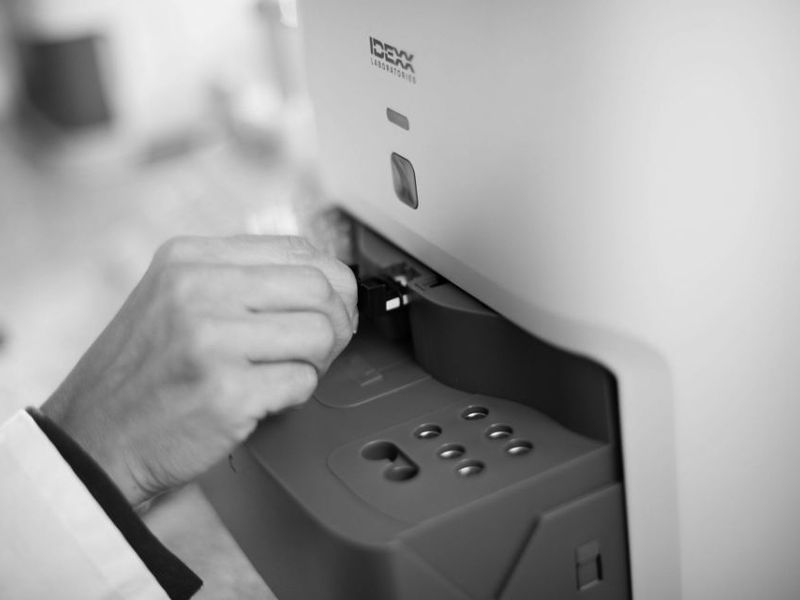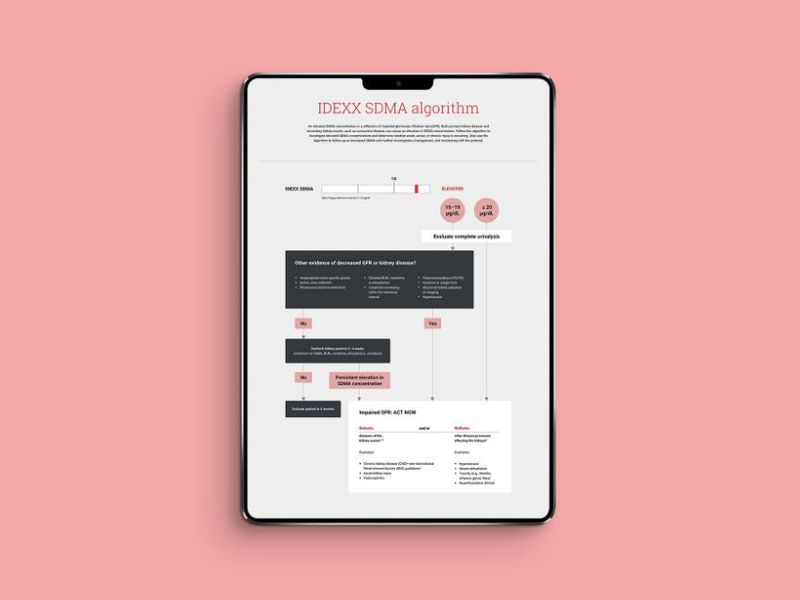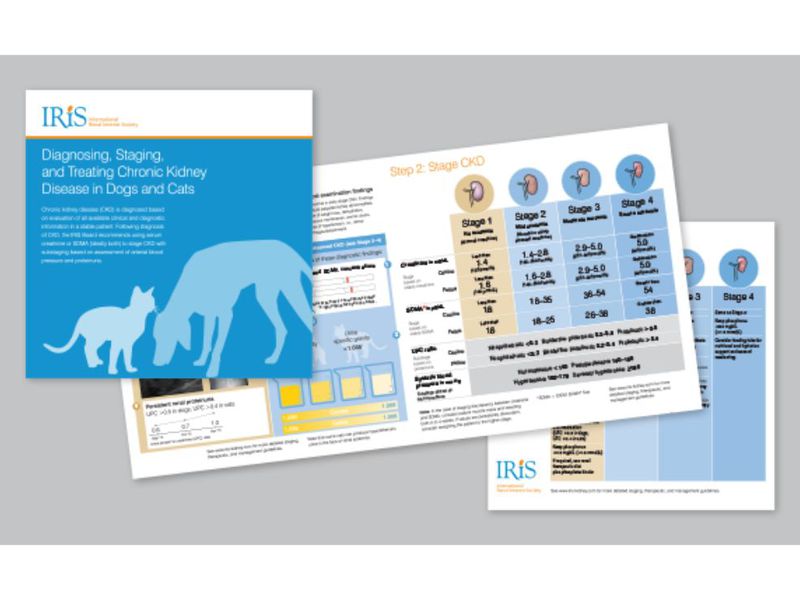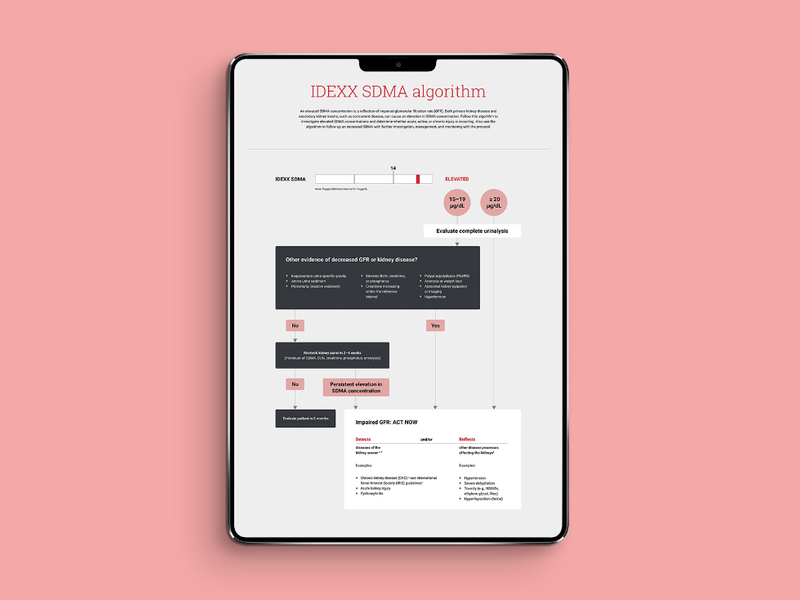IDEXX SDMA Resource Center
Everything you need to use, implement, and order SDMA for deeper insight into kidney function for cats and dogs.

Welcome to the IDEXX SDMA Resource Center
Here you’ll find everything you need to know about SDMA: From its value as a diagnostic tool to running the tests, interpreting results, ordering, and implementing it in your practice.

Watch a short instructional video.

Check out our step-by-step algorithm.

Learn how to interpret results.

Follow the IRIS guidelines to stage and treat CKD.
Everyday SDMA
You already know how important kidneys are to the overall health of a patient, but you may not be familiar with how much SDMA can tell you about kidney health—far beyond screening for chronic kidney disease (CKD).
Including SDMA as part of a routine part of kidney health evaluation (along with creatinine and urea) can lead to early detection of kidney decline and have a positive impact for all patients, whether they’re sick, well, juvenile, or geriatric.

What to do when SDMA is increased
When SDMA is increased, don’t hesitate.
Take action: Investigate, manage, and monitor.

Put SDMA to work for your practice.
Check out our Practice Resources page to learn everything from setting SDMA up in your PIMS to online training and ordering.

Follow the IRIS guidelines for staging and treating CKD
The International Renal Interest Society (IRIS) chronic kidney disease (CKD) guidelines recognize the importance of SDMA for diagnosis, staging, and monitoring.
Two options: same reliable results
![]() The in-house Catalyst SDMA Test, with multiple SDMA-inclusive profiles to meet your patient and practice needs.
The in-house Catalyst SDMA Test, with multiple SDMA-inclusive profiles to meet your patient and practice needs.
![]() The IDEXX SDMA Test, included with every chemistry panel or as a stand-alone test from IDEXX Reference Laboratories.
The IDEXX SDMA Test, included with every chemistry panel or as a stand-alone test from IDEXX Reference Laboratories.
Note: SDMA is symmetric dimethylarginine.
*These IDEXX SDMA medical claims are supported by extensive scientific evidence.
References
- Nabity MB, Lees GE, Boggess M, et al. Symmetric dimethylarginine assay validation, stability, and evaluation as a marker for early detection of chronic kidney disease in dogs. J Vet Intern Med. 2015;29(4):1036–1044.
- Hall JA, Yerramilli M, Obare E, Yerramilli M, Jewell DE. Comparison of serum concentrations of symmetric dimethylarginine and creatinine as kidney function biomarkers in cats with chronic kidney disease. J Vet Intern Med. 2014;28(6):1676–1683.
- Hall JA, Yerramilli M, Obare E, Yerramilli M, Almes K, Jewell DE. Serum concentrations of symmetric dimethylarginine and creatinine in dogs with naturally occurring chronic kidney disease. J Vet Intern Med. 2016;30(3):794–802.
- Hall JA, Yerramilli M, Obare E, Yerramilli M, Yu S, Jewell DE. Comparison of serum concentrations of symmetric dimethylarginine and creatinine as kidney function biomarkers in healthy geriatric cats fed reduced protein foods enriched with fish oil, L-carnitine, and medium-chain triglycerides. Vet J. 2014;202(3):588–596.
- Hall JA, Yerramilli M, Obare E, Yerramilli M, Melendez LD, Jewell DE. Relationship between lean body mass and serum renal biomarkers in healthy dogs. J Vet Intern Med. 2015;29(3):808–814.
- Data on file at IDEXX Laboratories, Inc. Westbrook, Maine USA.